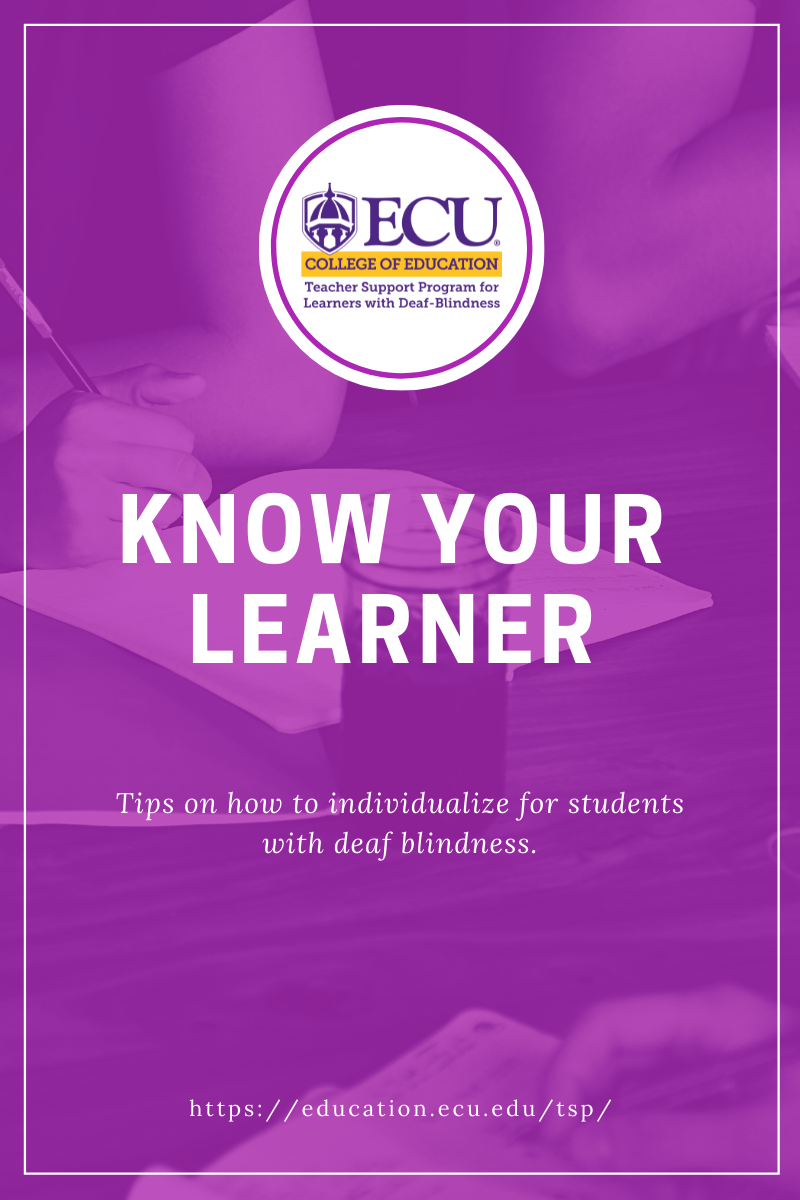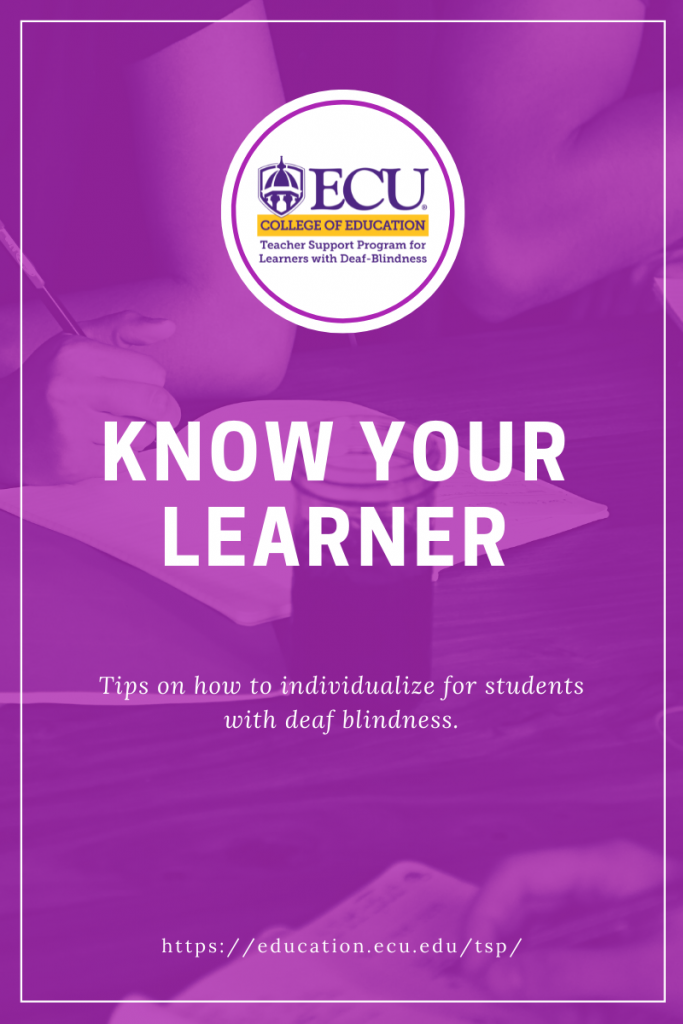Spending an evening painting on canvas is a favorite of mine. I’m not a naturally skilled artist so before the painting begins, planning must occur. I know my skills and limitations, therefore making a beautiful landscape like Bob Ross with the swish of a brush is not something I can do. It’s more defined as a paint-by-number plan. Decisions must be made before the paintbrush touches the canvas. What will I attempt to paint? Will it be within my current painting skill range? What types of paintbrush methods and adaptations will be needed to make my activity successful? It’s important to determine and plan for the skill levels and adaptations first.
Before teaching individuals with combined hearing and vision loss, it’s imperative to know the learners. We cannot plan individualized and effective goals, objectives, and lessons without making adaptations to activities and materials as needed. We must know the following about our students:
- Receptive modes of communication.
- Expressive modes of communication.
- Motor/Gestural output.
- Specific visual input (including picture or object symbols, printed words, facial expressions, gestures, sign language).
- Specific auditory input (including environmental sounds, spoken words, and speech intonation).
- Specific tactile input (including movement, signs, object symbols, touch cues).
- Areas of interest. For example, some students may prefer certain textures, intonations, colors, specific life events (e.g. playing with a certain toy or visiting a certain place).
- Background knowledge of child’s experiences. This helps to determine the child’s frame of reference.
Yes, everyone communicates, but it’s imperative to know how they communicate.
- How will they access the materials and activities?
- What adaptations need to be made?
- Do they have interest and background knowledge about the topic or skill area?
- How will we maintain their attention to the activities?
As with painting, we must know the student’s background before we move forward and make a plan of action.
If you don’t know where you are going, you’ll end up someplace else.” ― Yogi Berra
As a teacher or service provider, have you ever put together what you thought to be a stellar lesson plan and couldn’t wait to teach it in your classroom? You went into work that day feeling pretty good about yourself. You just knew it was going to be a great day because you created a lesson masterpiece. When the time arrived to carry out the lesson, you realized that you were quite wrong. It may have been an organized lesson that looked great on paper and addressed the standards, but it certainly did not address the individual needs of the students. Without proper planning, this can very easily happen when working with students with deaf-blindness. Using background knowledge of the student to plan and prepare is crucial.
Dr. Jan van Dijk, a leader in the field of deaf-blindness, shared information on the importance of knowing the learner. He taught the details of using child-guided strategies. We must know and understand the child’s perspective. No one has the exact same experiences as anyone else in life. Therefore each learner’s frame of reference will be different in varying degrees. Learners with combined hearing and vision loss tend to have splintered experiences in contrast to those who are typically developing. When a learner with deaf-blindness feels they have control of a situation, they are more likely to feel comfortable and discover paths of communicating and learning. Once the learner is comfortable enough to communicate and interact, then you can truly get to know the child.
So how do you get to know your learner?
- Become a follower and not a leader by meeting the learner in their world and from their perspective.
- Release control the situation and allow the learner to show you all of their abilities.
- Gain insight by observing and following their movements, interests, and emotions.
- Provide opportunities for them to be willing to open up once they feel comfortable and follow the suggestions from the partner to explore other forms of communication and interaction.
Check out these additional resources and videos about the topic from Perkins Institute and Dr. Jan van Dijk.
Child-Guided Assessment by Dr. Jan Van Dijk
Child-Guided Assessment Strategies by Dr. Jan Van Dijk
Now it’s your turn. What does ‘know the learner’ mean to you? Have you heard of the child-guided process or used this process before? Please share your thoughts.
Julie Brickhouse, M.Ed., NBCT, East Carolina University DeafBlind Project Teacher Support Program, Technical Assistance Consultant



1 thought on “Know Your Learner”